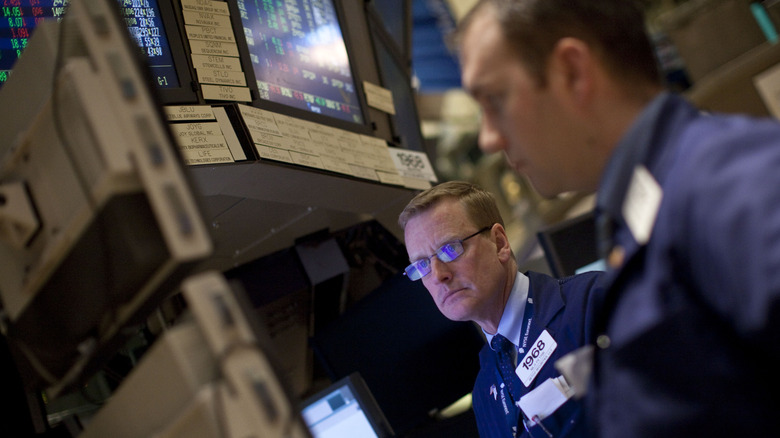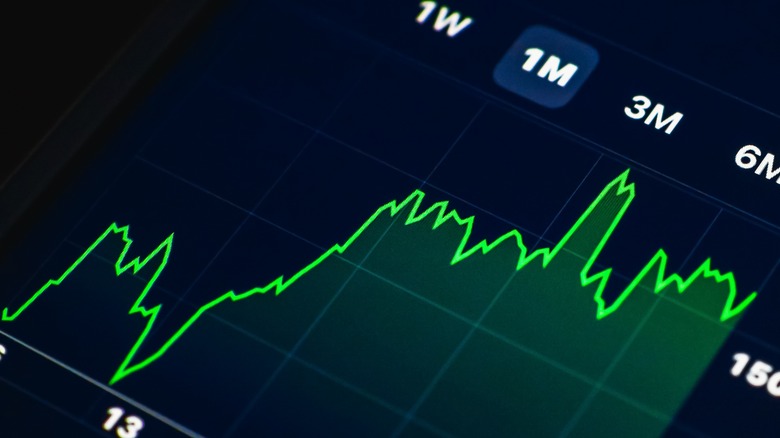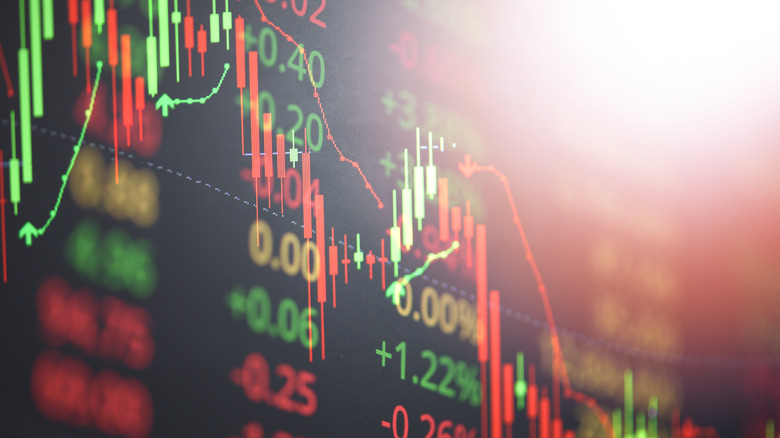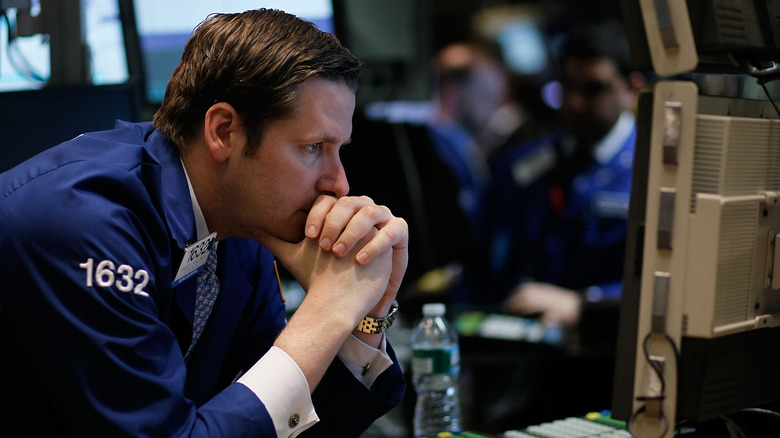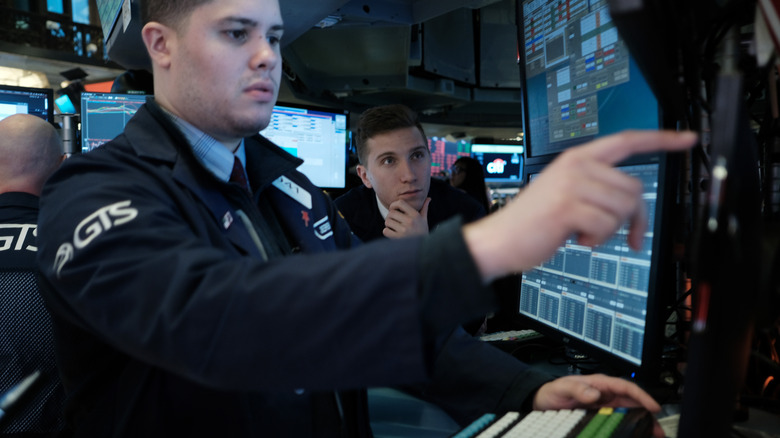What's The Difference Between A Stock Market Correction And Crash?
Potential investors looking to park their money in an asset class with solid returns may be drawn to the stock market, which can offer the promise of good rewards in exchange for a measure of managed risk. But the joy of watching your investments make money on your behalf also needs to be tempered by the expectation that markets don't just make you money, they can lose you money, too.
Drops in the market happen more often than you may think, and these are usually measured in percentages, with quick, short-term falls known as pullbacks; slightly larger ones called corrections; and even more dramatic drops, which lead to more serious economic consequences, known as crashes — the most recent of which caused the end of a giant wall street firm, Lehman Brothers, more than a decade ago.
As asset managers like Rob Haworth, senior investment strategy director at U.S. Bank, point out, markets are resilient, as they have been throughout history. "Keep in mind that we're likely to experience market ups and downs regardless, and over time, markets have shown an ability to recover," he said.
Stock market correction, explained
Market falls don't need to be small, nor are they always large and dramatic — the declines can come in mid-sized increments of between 10% to 20%, and which are also known as corrections. As former Wall Street investment analyst Joseph Houge put it to Forbes: "Say the words market correction and many investors immediately think of a crash or a bear market, with the panic-inducing idea that they'll be living on Ramen noodles through retirement. [But] In reality, stock market corrections happen relatively frequently, and they aren't nearly as bad as you might think."
Market corrections don't have to be driven by investor anxiety over potential losses; there are a number of real-world reasons why these might take place. Government policy may be shifting to accommodate for economic realities like inflation, which can drive prices higher. Then there is the rise or fall in consumer spending, which is thus far driving the country's economic growth — because the more people spend, the more companies produce, and the more hiring takes place, according to the U.S. Bureau of Labor Statistics.
As U.S. Bank explains, other factors that can trigger a correction include geopolitical events, like a trade war or Russia's aggression against Ukraine. In any case, corrections are not usually meant to last long, and after markets fall, they usually start trending higher again, which also says that since 1974, U.S. equities markets have only seen five corrections, which have translated into lingering periods of extended losses, also known as bear markets.
Stock market crash, explained
A fall in the markets is considered a "crash" when the index has lost more than 20% of its value; and crashes are almost always a warning sign that an economic recession is just around the corner.
One example is the Stock Market Crash of 1929 and the Great Depression that followed. And while it might sound like the loss took place overnight, the stock market actually declined over a period of weeks, and began with Black Monday, on October 28, when the Dow Jones Industrial Average lost 13%. The following day, the market fell 12%, and it wasn't until the middle of November that the market had lost half its value. It took almost three years, in 1932, before the Dow would close at 41.22, or its lowest point of the 20th century. Once a market crash occurs, Fortune estimates it could take up to four years for the market to recover U.S. Bank even though it took the Dow more than two decades to claw itself back to pre-crash heights, per Federal Reserve History.
Because the images of that first crash are so vivid, it may be difficult for many of us to absorb the fact that the stock market has actually fallen by more than 20% by a dozen times between 1946 and 2020, per Covenant Wealth Advisors. This includes the historic lows reached by the Dow Jones Industrial Average and the S&P 500 in March 2009, during the Great Recession. That loss saw trillions of dollars in assets evaporate.
Smaller stock market drops, explained
But not all stock market drops are measured in grand percentages, there are smaller ones, too, that can happen for any reason. Pullbacks, which represent market contractions of between 5% to 10%, can happen for any reason, including spot news events, which, at the time, might seem important but don't have a lasting impact. The outlet adds that pullbacks are so common, we've seen one a year on average since the Second World War. Altogether, these brief dips into negative territory have seen an average loss of 7%.
Guggenheim Investments admits pullbacks might seem unnerving, but adds that seeing the market fall isn't the time to exit it either. In a number of cases, more experienced investors consider pullbacks as an opportunity to enhance their stock portfolios by picking up a few bargains along the way. As famed investor Warren Buffett put it: "We haven't the faintest idea what the stock market is going to do when it opens on Monday. We've not been good at timing. We've been reasonably good at figuring out when we were getting enough for our money," per CNBC.
Stock exchange controls, explained
In the perfect world, we would like to think that government policies, facts, and spreadsheets determine investor sentiment; unfortunately, that is hardly the case, especially where short-term market decisions are concerned, which is why we have market-wide circuit breakers.
The New York Stock Exchange identifies three levels at which trading can be halted:
Level 1: When the S&P 500 index falls by 7%
Level 2: When the index drops by 13%
Level 3: When the index plunges by 30%
All percentages are pegged to the closing price of the S&P 500 index from the day before. If a Level 1 or 2 is called, trading comes to a 15-minute stop, but only if the drop occurs between 9 a.m. to 3:25 p.m. ET. But if a Level 3 is called at any time during the trading day, activity is suspended for the day and picks up the following day.
First introduced after the Dow Jones Industrial Average plummeted 7.2% in 1997 — and like the electronic devices for which they are named — "The market circuit breakers are designed to slow trading down for a few minutes, give investors the ability to understand what's happening in the market, consume the information and make decisions based on market conditions," New York Stock Exchange President Stacey Cunningham told CNBC. These breakers have been in place since 2013 and were used in March of 2020.
